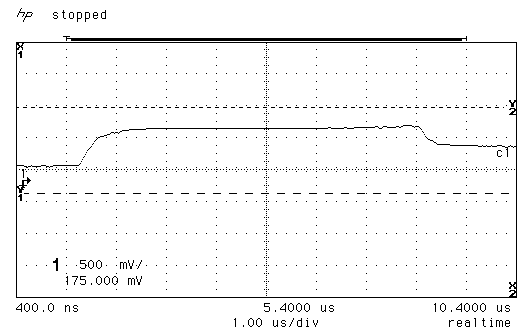

Oscilloscope trace of capacitive pickup plate signal with the FIR-FEL running
(V = 4.246 MV, Ib = 2 Amps, PRR = 3.75 Hz).
This represents terminal voltage on a short time scale
with high sensitivity. Terminal voltage is negative so a positive signal indicates a voltage drop. Initially,
a large slope appears because of the finite electron gun turn on time (~100 ns), where poor beam optics results in
high loss, and the finite transit time (~100 ns) before electrons reach the collector and establish recirculation.
Once this happens, losses drop from as high as 2 Amps to about 6 milliamps corresponding to 99.7 % recirculation. At
gun turn off, the electrons remaining in the loop recharge the terminal but not to the original level because of
the turn on / turn off losses. Note that these details are blured above because of slow amplifiers and a long
cable run. Recirculation is measured by comparing the slope, with recirculation, with the slope when the beam is blocked
and the full 2 Amps is lost (R = 1 - Sr/Snr).